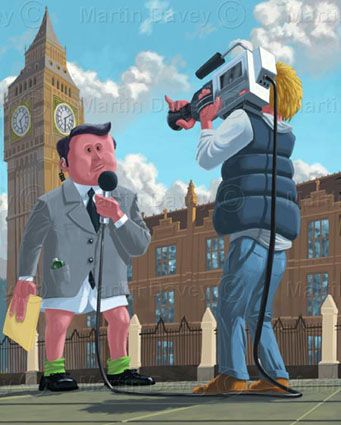 |
| 6.3-magnitude earthquake wreaked havoc in New Zealand's |
Rescuers picked through collapsed buildings after a 6.3-magnitude earthquake wreaked havoc in New Zealand's second-largest city, and officials said the death toll could rise into the hundreds as police imposed a curfew to prevent looting.
Prime Minister John Key declared a state of emergency Wednesday and said police have confirmed 75 deaths, with 55 of those identified. The toll from Tuesday's quake is expected to climb significantly as more bodies are found in the rubble, Mr. Key said, after a night when most of Christchurch went without electricity or running water. Christchurch's international airport, which closed after the quake, reopened Wednesday morning.
New Zealand Police said they had made six arrests in the central Christchurch area most affected by the earthquake and imposed a curfew in the area from 6:30 p.m. local time for "safety and security" reasons, according to a spokesman.
More than 1,000 police and military personnel have converged on the city to search for survivors.
"We have pulled people who have been trapped in the rubble for seven, eight, nine hours and they don't have a scratch on them. We've had other people where we've had to amputate limbs," Russell Gibson, the police superintendent in charge of the rescue overnight, told local media. Mr. Gibson said rescuers are getting texts and hearing tapping from trapped people.
Efforts focused Wednesday on rescuing people still trapped in collapsed offices such as the CTV Building in Madras Street. "Texts have been received from several people in the CTV building overnight but these have gone quiet in the last couple of hours," said Police Superintendent Dave Cliff.
Authorities also confirmed that two buses had been crushed by falling masonry.
Rescuers were working frantically Wednesday to free a woman trapped in the collapsed Pyne Gould Guinness office building. She was trapped under a desk and was able to move around slightly. "She is chirpy but wants to get out of there," said Grant Lord, responsible for operations at the site, who said her husband was onsite.
The police cordon around the building had to be extended, officials said, because they are worried it will pull down the building next to it.
Among the building's tenants are the local insurance unit of Marsh & McLennan Cos. and investment firm Pyne Gould Corp. A Marsh representative said a number of its workers were trapped in the building's several collapsed floors.

Among those trapped elsewhere in the city was a group of Japanese students and teachers believed stuck in the rubble of a school that collapsed, according to Japan's foreign ministry. Of the 23-member school group from Toyama prefecture that was on a foreign-language study program at King's Education College, 10 students remain unaccounted for, according to prefecture officials.
The quake struck six miles southeast of the city at midday Tuesday, adding to the panic and risk of injury, with the central district of the city full of shoppers, office workers and schoolchildren eating lunch.
Hospitals struggled to keep up with the numbers of injured, and emergency services warned they had run short of ambulances to ferry wounded survivors. International rescue teams were headed to the scene to help with recovery work. Japan's foreign ministry dispatched a three-member team Tuesday night to help coordinate relief efforts, and a 70-member disaster relief team, including Japanese coast guard officials, firefighters, police, doctors and nurses, was expected to depart Wednesday afternoon.
The quake comes as Christchurch recovers from a less violent but bigger seismic quake measuring magnitude 7.1 that hit last year, causing an estimated US$3.8 billion in damages. The city has since been hit by several so-called aftershocks that have continued to fray residents' nerves.
"Some people are really freaked out about it," said Brent Collins, a Christchurch resident. "Since September last year it has been pretty full on with loads and loads of aftershocks. It has been very unsettling."
Founded by Western settlers in the 1850s, Christchurch sits at the head of the fertile Canterbury plain region of New Zealand's South Island. The city, with a population of about 377,000, is a commercial center in the agricultural and tourism-dependent region and accounts for about 15% of the nation's economy.
The sight of the collapsed spire of the Anglican Christchurch Cathedral at the heart of the city epitomizes the scale of the disaster and the widespread damage to infrastructure and property.
Climbing Christchurch Cathedral's 117-foot tower—which was topped by the 526-foot spire—for a panoramic view of the city and the Port Hills beyond had been a must for the thousands of tourists who travel to the area every year.
The shock buckled roads, according to residents. "You can see where the liquefaction has happened and the road has bubbled up," said Rhys Morgan, a council worker who lives in the suburb of Riccarton, about two miles from the city's center.
Mr. Morgan said his home was without running water or electricity following the tremors, which were felt as far away as the city of Dunedin, 200 miles south of Christchurch.
The initial shock was followed by a series of violent but smaller earthquakes, a pattern that may continue to play havoc with the city for months ahead, experts warned.
Matthew Stevens, a geologist with GNS Science, said the quakes were occurring in the same fault line as September's shock. "This is technically an aftershock because it only happened because of the first earthquake," said Mr. Stevens.
The latest quake is a blow for New Zealand's economy, and it sent the New Zealand dollar, known as the kiwi, sharply lower. Early Wednesday, it was trading at 74.89 U.S. cents. On Tuesday, it hit an intraday low of 74.91 U.S. cents, down more than one U.S. cent, and its lowest level in almost two months. The country's benchmark share index closed down 0.9% Tuesday and was down slightly in Wednesday morning trading.
Further destruction to Christchurch will add to Prime Minister Key's economic problems, as rebuilding costs are expected to be high.
The current-account deficit, which reached 5.93 billion New Zealand dollars (US$4.48 billion) in the year ended in September, and a decline in tourism income have added to the government's agenda. The Pacific nation depends heavily on tourism and agriculture.
The New Zealand islands straddle a geologically unstable area across the South Pacific, part of the so-called Ring of Fire, and the country is famed for its thermal gushers that provide a sense of its inherent geological instability.
In 1931, a quake measuring 7.9 in magnitude in Hawke's Bay on the North Island killed 256 people, the highest toll from a quake in the country's recorded history.
Prime Minister John Key declared a state of emergency Wednesday and said police have confirmed 75 deaths, with 55 of those identified. The toll from Tuesday's quake is expected to climb significantly as more bodies are found in the rubble, Mr. Key said, after a night when most of Christchurch went without electricity or running water. Christchurch's international airport, which closed after the quake, reopened Wednesday morning.
New Zealand Police said they had made six arrests in the central Christchurch area most affected by the earthquake and imposed a curfew in the area from 6:30 p.m. local time for "safety and security" reasons, according to a spokesman.
More than 1,000 police and military personnel have converged on the city to search for survivors.
"We have pulled people who have been trapped in the rubble for seven, eight, nine hours and they don't have a scratch on them. We've had other people where we've had to amputate limbs," Russell Gibson, the police superintendent in charge of the rescue overnight, told local media. Mr. Gibson said rescuers are getting texts and hearing tapping from trapped people.
Efforts focused Wednesday on rescuing people still trapped in collapsed offices such as the CTV Building in Madras Street. "Texts have been received from several people in the CTV building overnight but these have gone quiet in the last couple of hours," said Police Superintendent Dave Cliff.
Authorities also confirmed that two buses had been crushed by falling masonry.
Rescuers were working frantically Wednesday to free a woman trapped in the collapsed Pyne Gould Guinness office building. She was trapped under a desk and was able to move around slightly. "She is chirpy but wants to get out of there," said Grant Lord, responsible for operations at the site, who said her husband was onsite.
The police cordon around the building had to be extended, officials said, because they are worried it will pull down the building next to it.
Among the building's tenants are the local insurance unit of Marsh & McLennan Cos. and investment firm Pyne Gould Corp. A Marsh representative said a number of its workers were trapped in the building's several collapsed floors.

Among those trapped elsewhere in the city was a group of Japanese students and teachers believed stuck in the rubble of a school that collapsed, according to Japan's foreign ministry. Of the 23-member school group from Toyama prefecture that was on a foreign-language study program at King's Education College, 10 students remain unaccounted for, according to prefecture officials.
The quake struck six miles southeast of the city at midday Tuesday, adding to the panic and risk of injury, with the central district of the city full of shoppers, office workers and schoolchildren eating lunch.
Hospitals struggled to keep up with the numbers of injured, and emergency services warned they had run short of ambulances to ferry wounded survivors. International rescue teams were headed to the scene to help with recovery work. Japan's foreign ministry dispatched a three-member team Tuesday night to help coordinate relief efforts, and a 70-member disaster relief team, including Japanese coast guard officials, firefighters, police, doctors and nurses, was expected to depart Wednesday afternoon.
The quake comes as Christchurch recovers from a less violent but bigger seismic quake measuring magnitude 7.1 that hit last year, causing an estimated US$3.8 billion in damages. The city has since been hit by several so-called aftershocks that have continued to fray residents' nerves.
"Some people are really freaked out about it," said Brent Collins, a Christchurch resident. "Since September last year it has been pretty full on with loads and loads of aftershocks. It has been very unsettling."
Founded by Western settlers in the 1850s, Christchurch sits at the head of the fertile Canterbury plain region of New Zealand's South Island. The city, with a population of about 377,000, is a commercial center in the agricultural and tourism-dependent region and accounts for about 15% of the nation's economy.
The sight of the collapsed spire of the Anglican Christchurch Cathedral at the heart of the city epitomizes the scale of the disaster and the widespread damage to infrastructure and property.
Climbing Christchurch Cathedral's 117-foot tower—which was topped by the 526-foot spire—for a panoramic view of the city and the Port Hills beyond had been a must for the thousands of tourists who travel to the area every year.
The shock buckled roads, according to residents. "You can see where the liquefaction has happened and the road has bubbled up," said Rhys Morgan, a council worker who lives in the suburb of Riccarton, about two miles from the city's center.
Mr. Morgan said his home was without running water or electricity following the tremors, which were felt as far away as the city of Dunedin, 200 miles south of Christchurch.
The initial shock was followed by a series of violent but smaller earthquakes, a pattern that may continue to play havoc with the city for months ahead, experts warned.
Matthew Stevens, a geologist with GNS Science, said the quakes were occurring in the same fault line as September's shock. "This is technically an aftershock because it only happened because of the first earthquake," said Mr. Stevens.
The latest quake is a blow for New Zealand's economy, and it sent the New Zealand dollar, known as the kiwi, sharply lower. Early Wednesday, it was trading at 74.89 U.S. cents. On Tuesday, it hit an intraday low of 74.91 U.S. cents, down more than one U.S. cent, and its lowest level in almost two months. The country's benchmark share index closed down 0.9% Tuesday and was down slightly in Wednesday morning trading.
Further destruction to Christchurch will add to Prime Minister Key's economic problems, as rebuilding costs are expected to be high.
The current-account deficit, which reached 5.93 billion New Zealand dollars (US$4.48 billion) in the year ended in September, and a decline in tourism income have added to the government's agenda. The Pacific nation depends heavily on tourism and agriculture.
The New Zealand islands straddle a geologically unstable area across the South Pacific, part of the so-called Ring of Fire, and the country is famed for its thermal gushers that provide a sense of its inherent geological instability.
In 1931, a quake measuring 7.9 in magnitude in Hawke's Bay on the North Island killed 256 people, the highest toll from a quake in the country's recorded history.



















































0 comments:
Post a Comment